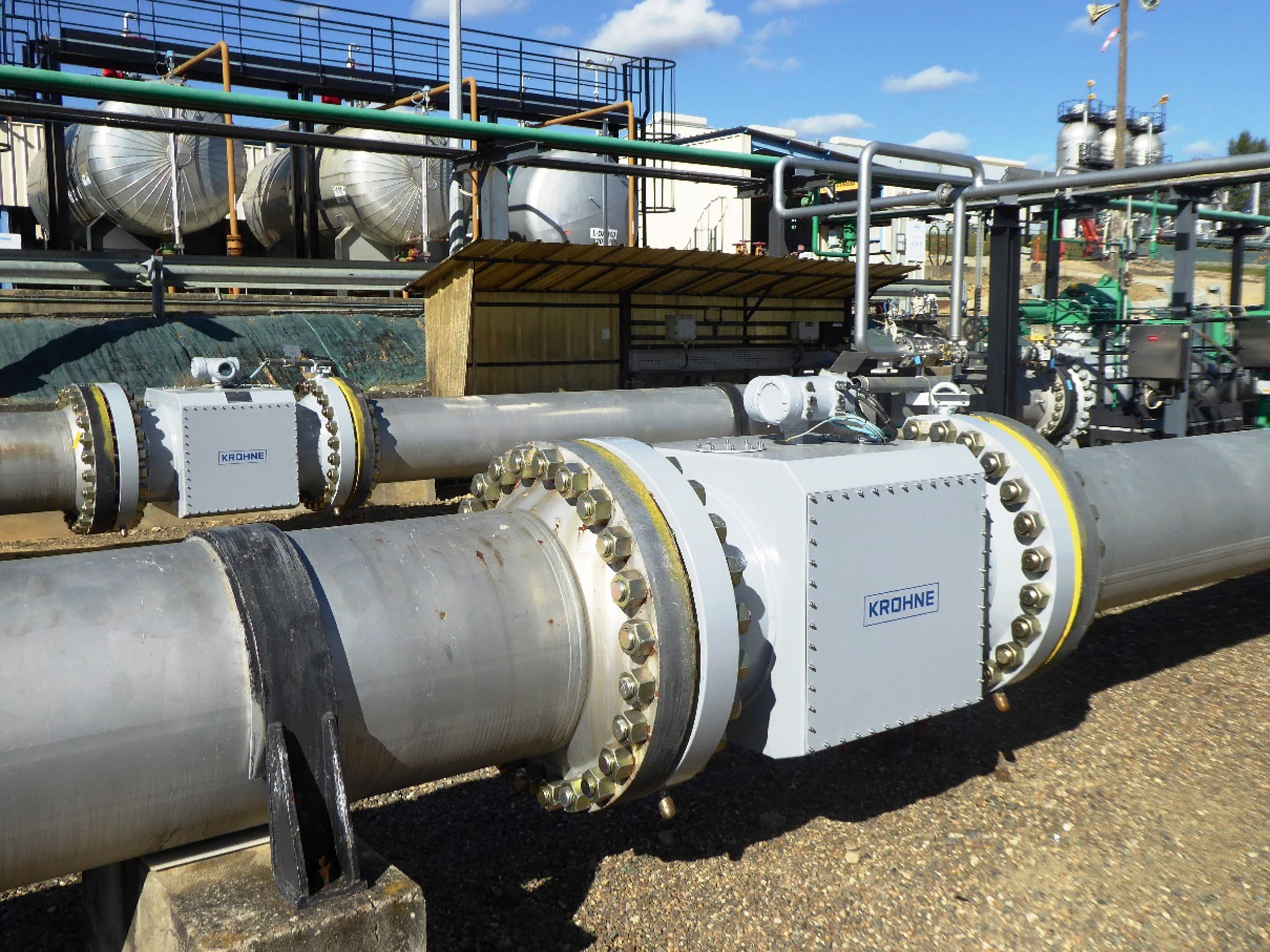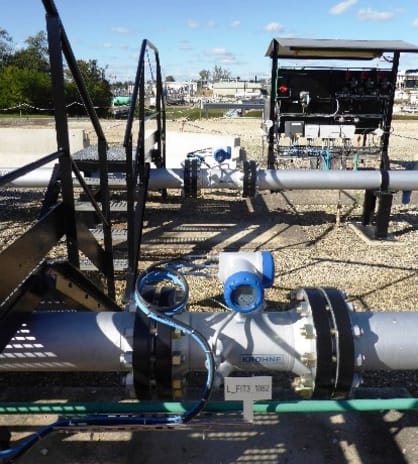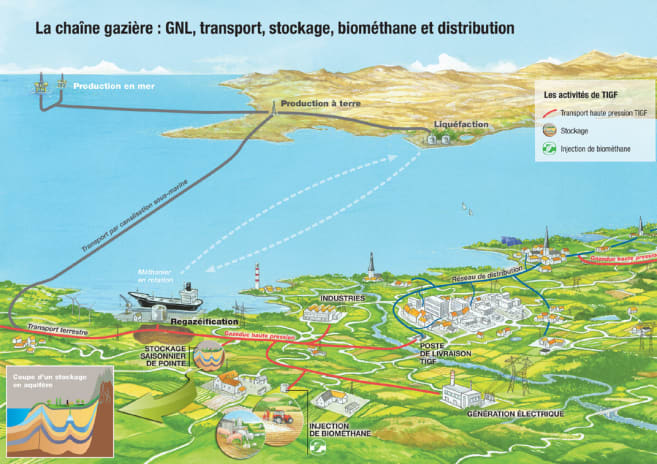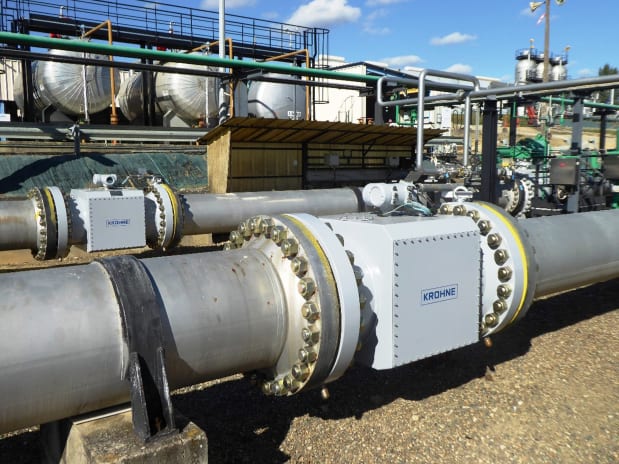Ultrasonic flow measurement for the internal monitoring of natural gas quantities
Application Report | Oil & Gas
- Flow measurement of natural gas at a storage facility
- Increased requirements for measuring accuracy
- Improved management of internal gas measurements

Background
TIGF, headquartered in Pau, France, is one of the main operators of the French natural gas transport network and specialises in natural gas storage. After it is extracted, the gas is processed and then transported either via gas pipeline or in liquefied form. When transporting in liquid form, the gas is loaded into liquefied natural gas tankers and taken to the designated receiving terminal. The gas is then processed, stored and gasified once again before being fed into the network and delivered to end consumers.
Measurement requirements
The customer must measure the stored, compressed and transported natural gas. Measuring the transported product volume requires a great deal of accuracy. Depending on the measuring point, the natural gas temperature may vary between 10…50 °C / 50…122 °F, the pressure may be between 30…85 bar / 435…1232.5 psi and the flow rate between 0…30 m/s / 0…98.5 ft/s. A measurement of the gross volume flow is the starting point and the pressure and temperature compensation (in other words the conversion to standard volume) takes place automatically.
Measuring accuracy is extremely important for TIGF as they need to be able to control the internal process from the storage facilities to the transport arteries at any time. The gas goes through various processing steps in the process. The company was thus looking to improve its internal gas measurements. The customer had previously used orifice plates or outdated ultrasonic flowmeters and was looking for a more reliable measuring solution. The customer specified the need for measuring devices with ATEX approval (Ex d), ASME flanges (Cl 600) and sealing rings. The instrumentation needed to be temperature resistant to -29 °C / -20.2 °F (the steel needed increased resistance in case of sudden decompression). It was also necessary for the device to be unsusceptible to any moisture occurring in the gas.
KROHNE Solution
A total of 14 OPTISONIC 7300 ultrasonic flowmeters and 3 ALTOSONIC V12 ultrasonic gas flowmeters were installed. The nominal sizes of the devices ranged from 8…24", with ASME RTJ flanges (Cl 600) and sealing rings, and were installed into mainly horizontal pipelines. However, two of the installations were in fall pipes with the appropriate inlet runs (10 D/5 D).
Customer benefits
IGF standardised its equipment fleet park with reliable and accurate instrumentation. The customer benefits from a reliable overview of the gas flow and now has better control over its facilities as a result of the improved management of the internal gas metering.






